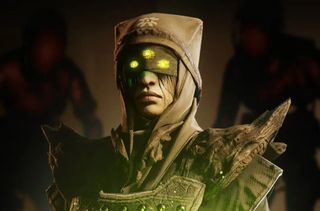
Last week Destiny 2 game director Luke Smith dropped his own version of the dead sea scrolls. Released in three parts, his thoughts on the recent past and soon-to-be present of the game weighed in just shy of 12,000 words, and is as dense with detail as you'd expect from a guy who once wrote a feature called "Broken Halo: Five Ways Bungie Can Fix Halo 2" for 1UP. Smith's latest brain dump is remarkable not just for the sheer amount of insight to unpick, but also its candor. The section on how Trials failed on his watch is particularly frank, and you have to wonder whether it would have been published at all under Activision's aegis.
As Smith notes in the first part, AAA developers don't really do this kind of thing anymore—or at least, not at this length. And yet, as an inveterate Destiny lifer, I found myself hungry for even more. Despite the head-crushing volume of commentary, there are still topics that were barely touched on or elided entirely. So whilst I would never be so presumptuous as to tell Smith how to change his game (*cough*), I do have some questions. Seven, in fact, starting with...
1. At what point does weapon power creep become a serious problem?
Smith spent a good chunk of Pt.1 talking about how powerful our Guardians have become, and how without reigning that power in, Bungie's own rules for encounter design get broken in undesirable ways. (RIP, The Reckoning.) He was mostly referring to super abilities and the exotic items used to extend and recharge them, but I want to know what, if anything, is going to happen to weapons. As far we know, our current arsenal can be infused to the new power cap in Shadowkeep. That being so, it's going to become harder and harder for the dev team to design perk combinations that are more attractive than the ones we already have.
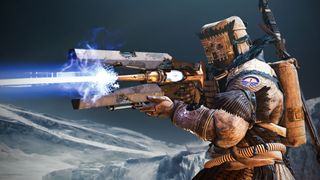
Thanks to the munificence of The Menagerie's chest glitch, a large chunk of the player base are now running around with god-rolled Austringer hand cannons, Beloved sniper rifles and Imperial Decree shotguns. Not to mention the 'dad loadout' fans among us who've had perfect Blast Rifle pulse rifles and Hammerhead LMGs since Season of the Forge. I recently took a look at my inventory from Destiny 1, and was surprised as how weapons I once thought to be S-Tier are pretty trash compared to what I'm rocking now. Perks like Swashbuckler, Rapid Hit and One-Two Punch are so powerful that it's hard to imagine improving on them.
Even if they do manage to come up with wild new options (here's hoping), we have to accept that design space is not infinite, and at some point new loot becomes boring because it struggles to compete. One solution might be for new weapons to include a secondary mod slot. (Think about how Spare Rations became more desirable than Midnight Coup.) That would temporarily solve the risk of boring loot, but only exacerbate the power creep. This is something Bungie is going to have to tackle eventually—and hopefully in a less brutal manner than when all our gear was abandoned circa The Dark Below DLC.
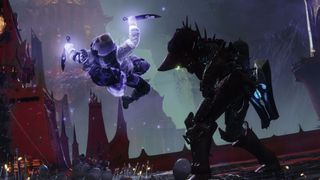
2. Why does Destiny 2 force players into modes they actively dislike?
Destiny 2 is relatively unusual for a service game in that it provides a substantial suite of both PvE and PvP activities (more on the issues with Crucible in a bit). In some ways that duality feels like a hangover from Bungie's Halo days, and a time when shooters were expected to ship with a big campaign and robust multiplayer as standard. But even if we accept that this combination of PvP and PvE remains a key ingredient of Destiny 2's special sauce (I'm not convinced), I don't think Bungie needs to foist the idea of playing every mode quite so hard. Whenever a questline features a substantial Crucible component, or indeed Gambit steps, the result is a bunch of disinterested players muddling through matches or—worse—using AFK bots rather than participating at all.
I get that not everyone has to acquire everything in the game, and we could choose not to chase these particular carrots, but these are often cornerstone quests we're talking about. And in the Crucible's case, the problems are exacerbated by the fact the design team really does feel asleep at the wheel. Smith notes in Pt.3: "We haven’t released a new permanent game mode, many game modes from Destiny 1 are nowhere to be seen, there isn’t a public-facing PvP team…" We noticed! Unfortunately, he doesn't really explain the absence of those things. Honestly, I'm sure the PvP team are working on something substantial—heck, maybe it's Destiny 3—but what's left behind is a vacuum that's been filled with grousing.
The biggest gaming news, reviews and hardware deals
Keep up to date with the most important stories and the best deals, as picked by the PC Gamer team.
The answer could be more choice. Have quest steps that can be completed in multiple modes without dumbing down the overall difficulty. And for the love of the Traveller, stop creating objectives which encourage people to play the game in ways that actively hurt their teammates. My heart sank every time I queued into Gambit and saw half my teammates clutching bows like bad Legolas cosplayers.
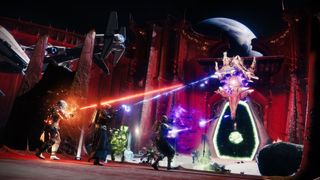
3. Is it time to give up on unilateral balancing between PvE and PvP?
Sticking with Gambit for a second, have you ever been mapped with a machine gun from scout rifle range. Of course you have. It feels terrible. The obvious answer would be to dial down the range of LMGs drastically, but here's the problem: from a purely PvE point of view, LMGs are fine. The range isn't especially obnoxious when you're mowing down thrall, and the utility-to-damage output is in a pretty sweet spot. As mentioned earlier, Destiny is unusual in that it enables players to carry the same gear between PvE and PvP, plus it includes a mode that's a hybrid of both. No wonder balancing is a big yikes, particularly given Bungie's designers have stayed steadfast to the idea that a gun should feel the same (or near as dammit) in whatever activity you use it in.
What can be done? More regular balance changes would be a start. Before D2 launched on PC, Smith told me that it would be possible to make granular changes relatively easily: "If we have a weapon that is a specific infractor, we’ll have the ability to go in and just touch that." That really has not proven to be the case. Instead, we get one big balance pass per season.
I'd be interested to learn what has held Bungie back from making smaller tweaks more often. Other than the fact that patches are a huge pain to roll out on three platforms, my suspicion is that Bungie overvalues how dissonant players will find it if weapons perform slightly differently in separate activities. Some archetypes, such as shotguns, have benefited from having substantially different tuning in PvE and PvP. I'd like to see that approach extended. For instance, Bungie could dial down flinch in PvE (but leave as is in PvP) so that when you're shot by trash mobs while ADS your sniper rifle doesn't instantly turn into an electric eel. Another option would be the addition of more perks and mods that are only active in one mode to enable finer tuning. Or, what the hell, we could nerf fusion rifles again.
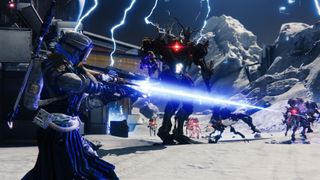
4. Why do some quests seem like they haven't been tested?
Having to unlock all three forges individually on every character. Trying to land dozens of grenade kills while on a Hunter in Iron Banner. Killing 100 EAZ minibosses for the Solstice armor despite progress inexplicably not being shared with your teammates. These were all quest steps from the annual pass era that felt egregious from the moment we encountered them. So much so that you couldn't help wonder how they'd been tested internally without getting immediately flagged.
Smith talks eloquently in Pt.1 about the pressure the annual pass has put on the studio, and how "the grind of working on Destiny... was starting to wear people down." That surely is a factor in explaining how such obvious 'mistakes' happen. From my point of view, this has been the best Destiny has ever been in terms of always having something to do, but clearly there are trade-offs when it comes to testing.
One of the strange things about being a Destiny diehard is that you get used to Bungie introducing a bunch of brilliant things with every new DLC, but also making a couple of decisions that seem literally inexplicable. Hopefully that phenomenon can be mitigated next year by no longer having to invent several systems for each new season. Perhaps making these kinds of missteps is just inevitable on a game like Destiny, which has so many layered systems and economies all interacting with each other. Nonetheless, I would like to read more about how those calls got made and whether they can be avoided in future.
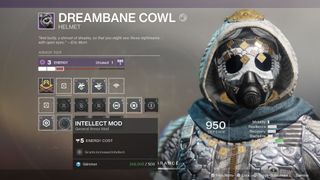
5. How else can world drops be made more relevant?
I've reached a point where if I receive another Go Figure pulse rifle, I'll have enough to arm the entire Chinese army with an individually rolled one. In Pt.2 Smith agreed that "world drops often feel like a waste". As I read it, he was talking about the fact they rarely contribute to the power grind, which is being changed with Shadowkeep so that you'll sometimes get lucky and have an item pop at equal to your current max power, potentially enabling an upgrade to a piece that's lagging behind the average.
Which is neat, but only solves half the problem. As big an issue is the lack of loot variety. The pool of legendary weapons and armor that can be found from vendor engrams or out in the world has remained largely the same throughout the annual pass. The reason is obvious: Creating brand new gear is much harder than people imagine, and Bungie's art team can't make enough of it to refresh the vendors or world loot pool regularly. But what the studio could potentially do is bring back weapons like the old Trials gear or the Mercury Forge weapons (this might actually be happening) which currently don't have mod-compatible versions and add these to selected loot pools with random rolls. I don't want to pretend that's an easy task, but without doing something there's a risk that much of the game's loot feels irrelevant when it drops. And that's an issue in a looter shooter.
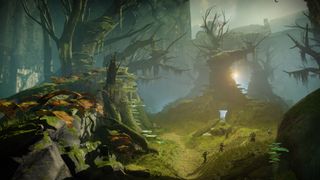
6. Why would we want to go back to the old item leveling system?
In Pt.2 Smith mentioned that he misses "filling bars on my items and using materials to level items" and I immediately suffered a dizzying flashback to hours spent running farming loops for Relic Iron on Mars. Whilst I get—and welcome—the idea that Destiny 2 is leaning into being an RPG and putting more depth on the character sheet, I find this nostalgia for onerous leveling pretty weird. It was always a ballache back in vanilla D1 when you got a new weapon and then had to spend multiple hours running patrols to unlock its perks.
Where I'd be more inclined to agree with Smith is if the kind of bar-filling he's referring to is akin to the current exotic catalyst system—ie you're working to earn an additional perk that's a cherry on top—or perhaps some deeper form of masterworking. My worry, though, is that the community will inevitably find the path of least resistance to filling those bars—which will probably be camping out in the Thrall basement of the Whisper mission—and just do that ad nauseam. Still, sounds like Smith was musing here rather than describing an imminent change. And speaking of things that are a way off...
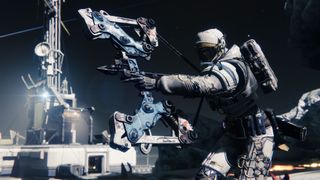
7. The long-term existential question: How will the jump to D3 work?
One of the most interesting lines in Smith's whole treatise is that Destiny 2 "cannot grow infinitely forever". (Smith added that some activities will be dropped at the end of their respective seasons, though we're unclear on the details here). Part of the issue is that Destiny 2 is limited by the install file size caps on console, so the idea that it might move to a WoW-style model where the base game is added to with endless expansions is effectively ruled out. Indeed, Bungie has been pretty clear that there will be a Destiny 3 at some point. Which leads me to wonder how that transition can avoid the kind of endgame content scarcity that dogged D2 at launch. Aside from the fact that the design of D2 initially swung way too hard towards appeasing the casual crowd, it also suffered by comparison to the sheer amount of stuff there was to do in D1. As Tom's review noted at the time, the base campaign was great, but the endgame was anaemic.
At that point in its lifetime, D1 had enjoyed substantial successful expansions like The Taken King and Rise of Irons, had myriad quality of life improvements, multiple raids and so on. It was Big. And by the time Bungie is ready to make the jump to D3, D2 will arguably be even bigger (and much of which will be free, thanks to New Light). That makes me think that Bungie will need to find a way to retain some of what's currently in D2—especially the planetary zones, even if it means they get a makeover—in order to avoid starting completely from scratch. Note also that, nostalgia aside, the reason we've spent a chunk of D2 re-acquiring exotic gear from D1 is that, as touched on earlier, this stuff takes ages to make. The result is that there's very little chance you can launch a brand new game with enough of it to sate an audience which is more voracious than any dev model can effectively cater to. Still, better for Bungie to have that problem than the alternative.
Destiny 2: Shadowkeep and New Light will both launch on 1 October. You can find our guide on how to get into the game here.
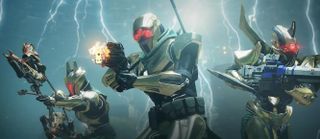
With over two decades covering videogames, Tim has been there from the beginning. In his case, that meant playing Elite in 'co-op' on a BBC Micro (one player uses the movement keys, the other shoots) until his parents finally caved and bought an Amstrad CPC 6128. These days, when not steering the good ship PC Gamer, Tim spends his time complaining that all Priest mains in Hearthstone are degenerates and raiding in Destiny 2. He's almost certainly doing one of these right now.
Most Popular

